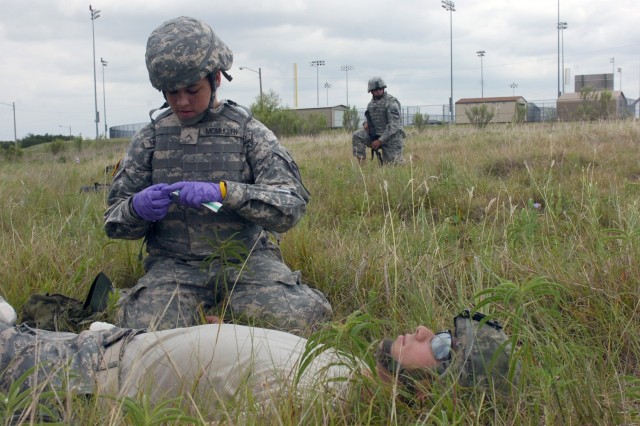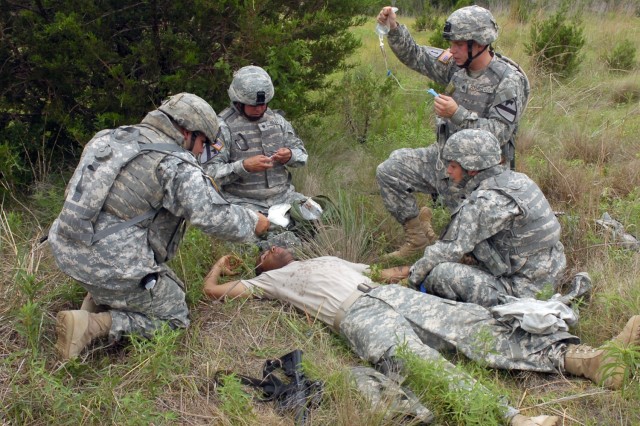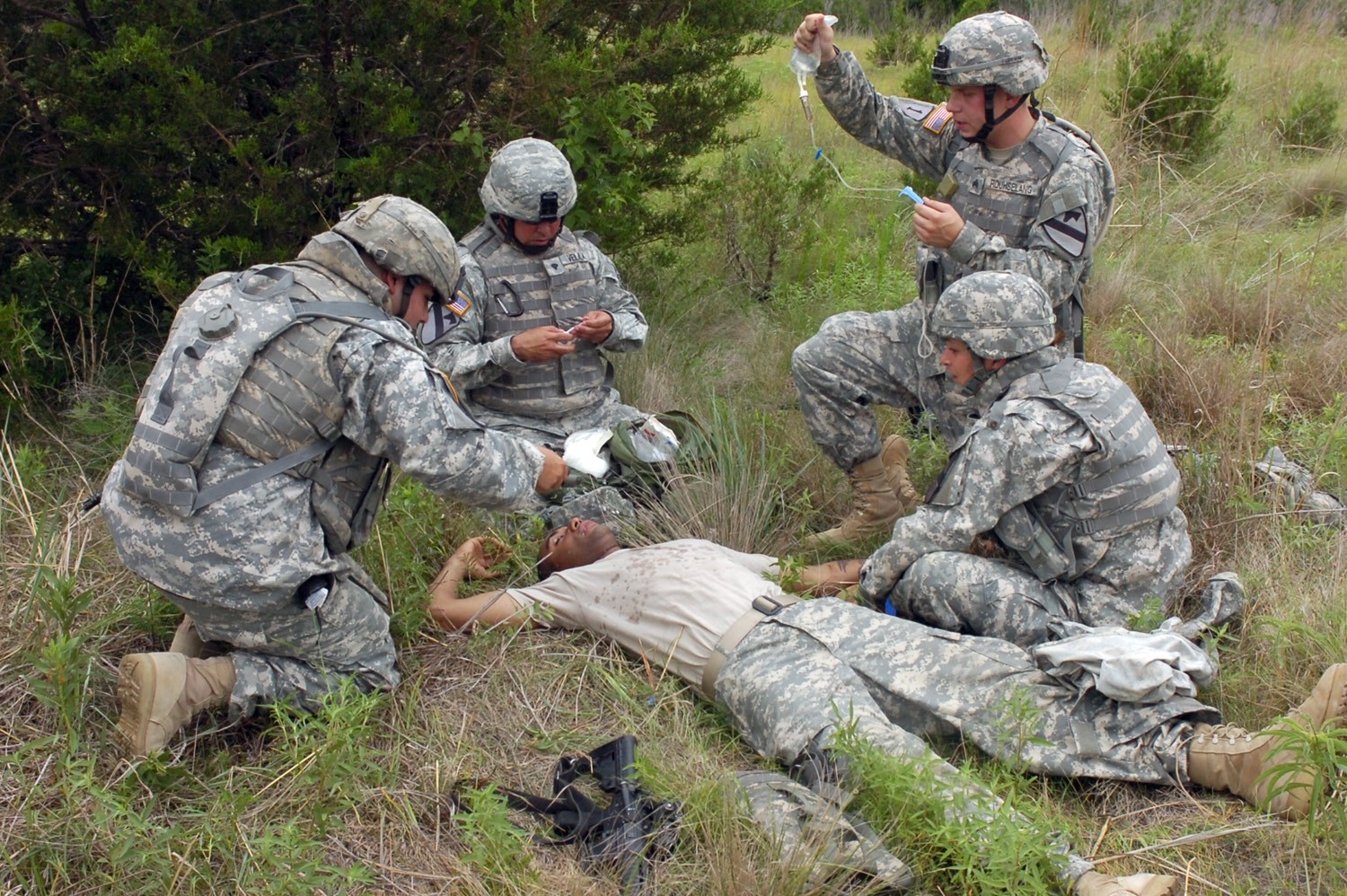FORT HOOD, Texas - Soldiers from the 3rd Battalion, 82nd Field Artillery Regiment, 2nd Brigade Combat Team, 1st Cavalry Division, endured a grueling, week-long combat lifesaver (CLS) course in order to certify or recertify them as combat lifesavers June 3-6.
CLS courses were established to train non-medical Soldiers as first responders to provide emergency medical care on the battlefield and have become standard training for Soldiers in units with potential deployments.
The training was conducted just like in basic training with a crawl, walk and run approach, beginning in the classroom and ending with a practical field exercise under stressful conditions to make the training more realistic.
Cpl. David Davis, a native of Charlotte, N.C. who is assigned to Headquarters Battery, was one of the lead instructors who helped develop the course with several members of his squad.
With the help of Davis, Spc. Jonathan Carp, a native of Houma, La., and Spc. Matthew Buchanan of Manassas, Va., Davis, based the training off of medical training they received while at Fort Sam Houston in San Antonio.
"Basically, my intent for the day was to show them the rigors of having to work in a high stress environment, being fatigued and tired and also performing the job," Davis said.
Although the training does not always transfer directly to the situations Soldiers will encounter in Iraq, Carp explained that it does successfully recreate a stressful environment with chaos and confusion, while having to keep your head about you to carry out medical treatments.
The training began with a patrol through a small, wooded area near their barracks as if patrolling along the edge of a city. The Soldiers took some casualties along the way and were assessed on several medical tasks to include evaluating a casualty, administering IVs, treating open chest wounds, applying tourniquets and calling in a nine-line medical evacuation request.
"Basically what we are trying to do is make the medical training as fundamental to them as all their other military training where it's as natural to them to pull out the CLS bag and treat the casualty as it is to shoot the weapon or drive the truck or whatever their job is," Carp said.
The last event was an assault on a position in which prisoners of war were rescued from a barracks room. Again, the Soldiers received casualties along the way and had to treat them while rescuing the POWs as well as organize a casualty collection point. Davis said that this was not part of the normal CLS course, but was added to make the course more strenuous.
"I can make the training a little bit rougher and tougher for the trainees so they can actually feel and endure the same pains overseas when we get deployed," Davis said.
Spc. Robert Davie, a canon crewmember with Battery B who underwent the training said these skills are so important because they could be the difference between life and death on the battlefield.
"It's (CLS training) absolutely essential because if we didn't have these first responders, we'd have a lot more battlefield deaths" said the Chicago native.
According to Davis, these Soldiers will be able to use the skills they've learned in the course not only to help save lives in combat but also to help backfill any medic shortages that their unit might have.
"This training will be an unbelievable asset. When I actually deployed we had about two medics and we had about six or seven CLS personnel in our whole battalion," he explained. "In today's army we don't have enough medics to accommodate Soldiers so having CLS personnel that can do almost as much as the medics are an asset the Army cannot do without."










Social Sharing